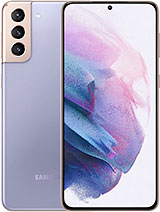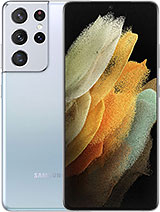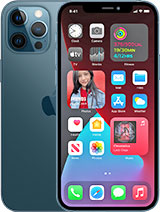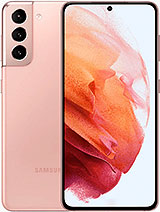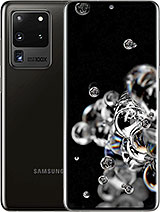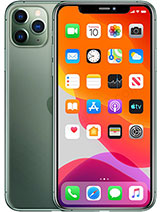Samsung Galaxy S21 Ultra vs iPhone 12 Pro Max Camera Test Comparison By SuperSaf
- What's up guys. Saf here on SuperSaf TV and welcome to the much awaited SuperSaf style camera comparison between the Samsung Galaxy S21 Ultra and the iPhone 12 Pro Max. The big boys. The one you've all been waiting for. We're going to be testing out all aspects of the cameras, front-facing, rear-facing images, video, low light. There will be some timestamps down below if you want to check out a particular section, but you're going to want to watch all of it.
Front-facing cameras right now, video. We're going to test out stabilization. So currently walking, vlogging. Now we're going to test out a bit of an extreme with running. (keys jingling) (wind blowing) We've now switched to the rear-facing cameras.
And let's test out stabilization from the rear-facing cameras. So general walk if you're vlogging and we're going to go ahead and run. (wind blowing) Now we do have an ultra wide camera on both devices, so we can switch to that. And we're going to test out stabilization from the ultra wide cameras. So again, a walk.
And now a bit more of an extreme test. Now both also have a zoom camera, so we can do up to 2.5 times optical zoom on the iPhone, we can do three times on the S21 Ultra. We can also do up to 10 times optical zoom on the S21 Ultra, which is pretty insane. Check that out. We have now switched to 4K 60 frames a second for both devices.
And we'll also test out stabilization with 4K 60. So starting off with a walk and now let's run. (birds chirping) And for the first time on a Samsung device, we have 4K 60 frames a second from the other cameras as well, so ultra wide camera right now and 4K 60. Let's just do a quick stabilization test. (wind blowing) 4K 60 frames a second from both devices.
Really want to see what dynamic range will be like, but also what stabilization will be like at 4K 60. So let's take a walk. And let's run. We also have HDR video recording on both devices, so got a lot of light coming here from the background. This should be a really good test to see what the dynamic range is like on both devices.
Let me know what you think. Now the iPhone also has HDR video from the front-facing camera. This is something that you don't have from the S21 Ultra. And just to kind of show you an extreme background here where there's a lot of light coming in. Let me know what you think.
Now on the S21 Ultra, you can go all the way up to 8K. Gives you a lot of resolution. Now, you don't get that stabilization at 8K, so that is something that you lose out on, but you do get a lot of detail and you can crop it. Now, low light video test. Pretty dark in here.
Just some street lighting. Let's take a look around. I'm just going to walk here as well. See what the noise levels are like. Let me know what you think.
Testing auto focus on the iPhone 12 Pro Max. Very, very fast. Same test on the S21 Ultra. Also very, very fast. Low light auto focus test now on the iPhone 12 Pro Max.
Very, very fast still even though we are in low light. Same lighting on the S21 Ultra. It is working, but it's definitely not as good as the iPhone. (click) So that was the video. Now before we move on to images, if you enjoy what you're seeing so far, then please do consider subscribing to the channel.
I post lots more content like this on here. We've got plenty more S21 Ultra coverage coming up. Right. Now let's have a look at what we're working with here. Both devices have lots of cameras.
I mean, lots, especially the S21 Ultra. For the front-facing cameras, the S21 Ultra does have a high resolution, but generally, you will be shooting at around 10 megapixels to get the most out of the sensor. For the rear-facing cameras, we have ultra wide, primary and telephoto cameras. The S21 Ultra however does have two telephoto cameras. There's a three times and there's also a 10 times optical zoom periscope camera.
As well as that, the primary camera on the S21 Ultra does have a 108 megapixel resolution, which is very high. However, once again, you will generally be shooting at around 12 megapixels to get the best out of that sensor. We've got a LiDAR scanner on the iPhone 12 Pro Max and then we've got a laser auto focus sensor on the S21 Ultra. Both devices can also shoot raw, so this will allow you to have a lot more data on your images and it will give you a lot more flexibility when editing in post. We are not going to be looking at raw images in this video.
Otherwise, this already very long video would be even longer. If you guys are interested in a raw shootout, then we can do that in a separate video. Let's have a look at the images. Now after taking hundreds of shots with both cameras, honestly speaking, the primary cameras in good light, it is very much neck and neck. As always, there are differences in color.
I do find that Samsung devices do tend to go towards more vibrant colors, but generally speaking, both take excellent sharp images from the primary cameras. Dynamic range is also very good, but can go back and forth. So for instance in this shot, if you look towards the background, you can see some of that cloud detail on the S21 Ultra where it has been overexposed on the iPhone 12 Pro Max. However, when we look at this shot, it's actually the opposite. The S21 Ultra has lost a little bit of detail in the cloud areas whereas the iPhone 12 Pro Max has maintained that.
The S21 Ultra, a little bit brighter in the shadows here whereas the iPhone 12 Pro Max, a little bit darker in the shadows, but again, generally speaking, I think both do very well and it is pretty much neck and neck. Now remember, I did mention that the S21 Ultra does have a very large 108 megapixel sensor. So here's an image side by side. I mean, very difficult to tell the differences here. Both are doing an excellent job, but we can activate the full 108 megapixels if needed like we have done in this shot and you get lots and lots of detail.
If we do go in 100% on both of these images, you can see that we can also crop in much further on the S21 Ultra, so this is an advantage that you get on the S21 Ultra. Now here's a close-up image of this leaf and I think the color differences are very much emphasized here. The S21 Ultra, definitely going for those more vibrant, punchy colors. There is no real right or wrong here. It just comes down to your personal preference, but one of the things that we did notice on previous Samsung devices was because of that larger sensor, we do get a very nice shallow depth of field, so things will be a bit more blurred in the background for the S21 Ultra when you are close up like this compared to the iPhone 12 Pro Max.
Now, one of the negatives of this, however, is that the edges can start getting out of focus very, very quickly because you have a very small plane of focus. So for instance, if you take a look at this photo of the leaf, towards the edges of the leaf, things are already starting to get out of focus. Now, Samsung has tried to combat this by switching over to the ultra wide camera when you do get closer than around 30 centimeters to a subject and this keeps a lot more in focus as you can see here. Now, the shot is not necessarily as pleasing as the initial shot from the primary camera, but I do like that you have that flexibility because say for instance you're taking a shot of your meal and you want the whole plate to be in focus, you don't want things to start falling off in focus very quickly, then you can easily go onto this mode. It does activate automatically, but if you don't want it, there is a button there which you can switch off, so I really do like that Samsung has addressed our feedback and given us these options.
Now ultra wide cameras, you guys know that I love ultra wide cameras and honestly speaking, I think both of these do a very good job overall. You can see here, we've got a situation with very tricky dynamic range, we've got the light coming in from the background, but both have handled this very, very well. Here is another ultra wide shot and on the face of it, the S21 Ultra does look like it's doing better. The iPhone 12 Pro Max has blown out the sky. However, if you look towards the grassy areas, there is a lot of processing and this processing is very obvious on this shot here.
So I'm sat in my car and if you look at the iPhone 12 Pro Max, yes, there is some processing happening, but the blacks on my jeans have been maintained whereas looking at the S21 Ultra, it's really tried to boost those shadows to the point where they've started to break and you can really see all of these artifacts on my jeans. And the jeans also now have this green tint. They have lost that black color that they originally have. So this is definitely something that I'm not too keen on on the S21 Ultra and I do generally prefer the ultra wide shots from the iPhone 12 Pro Max. However, the S21 Ultra does have a trick up its sleeve and that is that the ultra wide camera has dual pixel auto focus and that means you can refocus for amazing looking macro shots.
So here's an example, getting right up to the button on my steering wheel. I could actually get a fully focused shot of this on the S21 Ultra. Obviously, the iPhone 12 Pro Max is not equipped for this and here, you just cannot focus in that close. Here is another example, getting right up close and personal with this leaf. You can see all of those intricate details thanks to the focusing on the ultra wide camera.
And macro cameras do get a lot of slack, the two megapixel macro cameras that we see on other devices, but on the S21 Ultra, the macro feature on the ultra wide camera is very, very good. Now let's move on to zoom. So as mentioned, both devices do have zoom. Here is a shot taken from the primary cameras. Very good in both, color differences.
Now we can go to 2.5X on the iPhone 12 Pro Max and we can go to 3X on the S21 Ultra. And here you can see that both are actually doing really, really good and I would call it a bit of a draw because the optical zoom on both devices is very, very good, but the S21 Ultra can go even further. So we can go to 10X. Now if we compare this to the 10X digital zoom on the iPhone 12 Pro Max, it's obviously just not going to do as well because we've got optical versus digital and you've got a much more clean and sharp image on the S21 Ultra compared to the digital zoom image on the iPhone 12 Pro Max, but it does not stop there. The S21 Ultra can go even further, so we can go 30X here, and the iPhone 12 Pro Max does max out, iPhone 12 Pro Max maxes out, at 12.5X digital zoom. The S21 Ultra can go even further and we've got 100X spice zoom.
Okay, okay, it's not spice zoom, it's space zoom. And I'm going to say this again, I'm not a huge fan of using 100X zoom, but it definitely has been improved compared to the Samsung devices last year, the Note 20 Ultra and the S20 Ultra. You can really get up close. If we just switch back to the original 1X to this, look how much closer you can get. Now, I wouldn't be using this all the time.
It's only I think in particular situations, maybe there's a sign that you want to see in the distance, maybe there's your ex that you want to spot in the distance, not really, don't do that, that's stalkerish, but nevertheless, 100X zoom on the S21 Ultra is one of the best on any smartphone, I would say it's best on any smartphone and that's because you also have zoom lock. When you are at something like 100X with a smartphone that's in your hand, there's going to be a lot of shake and all of those little micro shakes are amplified by 100 times. Now with the zoom lock feature, it actually does a really good job of locking the zoom so it doesn't move around as much and you can get some pretty good results. Not necessarily usable results on social media et cetera unless you're just showing off the zoom, but nevertheless, some very impressive results. Now let's look at portraits.
So this is where you get the artificial blurry background effect and this is with the primary cameras. Both have done a pretty good job overall. The edge detection isn't perfect on either and then we do also have the option to use the telephoto portrait. Now this is interesting because here, we're using telephoto portrait on both devices, but remember, the S21 Ultra has 3X telephoto whereas the iPhone 12 Pro Max has 2.5X telephoto. So you'll notice here that the S21 Ultra should be going in closer, but it's not because it is using the primary sensor and punching in to give you the equivalent of around 2X zoom and this results in a very soft shot, so I'm not sure why Samsung isn't just using the 3X.
Yes, it would punch in quite a bit, but I would like to have that option. And for this reason, the iPhone 12 Pro Max is just doing miles better in my opinion. The image is sharper. Yes, it's confused a little bit with the pipe just clashing with my face, but the S21 Ultra has kind of blurred out my ear and the skin colors on the S21 Ultra I find for portraits are still too bright. It's washing me out.
Now yes, you might argue that the iPhone 12 Pro Max is a little bit too on the orange side, but personally, I do prefer this to the washout that we've got on the S21 Ultra. Here is another portrait again from the 1X. Both are doing pretty okay overall. Neither of them are perfect in terms of edges. They have missed out a few things, but then when we do go to the telephoto portraits, then, I mean, the iPhone, doing an excellent, excellent job here in terms of the edges.
Again, the image is very, very sharp. The S21 Ultra has actually messed up the edges around my hair and my sunglasses and the overall image once again is quite soft because it is not using the dedicated telephoto zoom camera. Again, I'm not sure why this is, but when it comes to portraits, the iPhone is definitely getting the edge here and that edge continues over into low light. Thanks to that LiDAR scanner, the iPhone can focus in on low light subjects and using night mode, it can give you some very good low light portraits. So here is from the primary camera.
You can see that the iPhone is doing a much better job. It's a much brighter image. The S21 Ultra, I mean, it's really washing me out and I am looking like a ghost here. And of course, we can't use the telephoto in low light, but the same night mode effects don't apply it to the telephoto camera of the iPhone 12 Pro Max and the aperture as well is not as wide, so the image is nowhere near as bright as it was on the primary camera, but it is much sharper and I still do prefer it to the S21 Ultra, which is still using the primary camera, so it does appear to be brighter, but just look how soft it is, and again, I am completely washed out. Another example, this, we did have a little bit more light.
I still do prefer the iPhone 12 Pro Max. You've got a much sharper overall result and with the telephoto, here, clearly, the iPhone 12 Pro Max, it's not as bright as the primary camera, but it is still sharp whereas the S21 Ultra is giving a very, very soft result. Now moving on to general low light shots, we do have a night mode from both devices and they both actually do an excellent job. Here you can see them side by side and honestly speaking, I cannot pick a winner. I think both are doing an excellent job.
Another example. Again, very difficult to pick them apart. Both are actually doing very, very good in low light. One more sample indoors in lower light. Again, both are doing excellent.
The iPhone 12 Pro Max I would say is a tad sharper. That might be down to the sensor. The S21 Ultra, because of that larger sensor, you are starting to lose focus on the background subject. And then the ultra wide cameras. Now here, it was quite interesting because the S21 Ultra gave you a much better result in my opinion.
The iPhone 12 Pro Max, when you are using the ultra wide camera in low light, it can appear very, very soft as you can see here. And also in this example. This is extreme low light. The S21 Ultra, just giving you a brighter and much sharper image with less noise. If you look towards the clouds on the iPhone 12 Pro Max, you do have lots of noise.
Now let's move on to selfies. So we do have a new feature on the S21 Ultra and when you do open the selfie camera for the first time, it actually asks you, do you want natural or bright tone selfies? A lot of you guys will know that traditionally, Samsung devices do brighten you up quite a bit and it's something that is down to personal preference. I personally do not like bright selfies. I am proud of my brownness and I want to keep it that way and I'm so glad that this is here and it definitely does make a difference. Now here on this image, I think both are actually doing a really good job.
Good dynamic range on both devices. You can see that we do have light coming in from the background. Slight differences in skin tone. Now both devices, you can go for a wider selfie view if you want to get more of your background in or if you want to do a group selfie and here, I do prefer the S21 Ultra. It does seem to have better overall dynamic range.
You can see in the background, the iPhone 12 Pro Max has washed out a bit more in the background compared to the S21 Ultra. Here is another example, an extreme situation where we have lots of light in the background and again, I do prefer the S21 Ultra. It has maintained a lot more of the highlights in the background while still keeping me correctly exposed in the foreground. The iPhone 12 Pro Max has really tried to boost the shadows in the foreground, but in doing so had blown out the background and my jacket also is no longer looking black, it's looking more towards the gray side. Now I wanted to test out skin tones a little bit more, so I went in a situation where it was shaded and here, I mean, the S21 Ultra, even though the selfie tone is set to natural, I still do think it's a little bit on the fair side.
The iPhone 12 Pro Max is a little bit on the orange side. I think my actual skin tone is somewhere in between these two, so I do think it's going to come down to personal preference. You can also notice that the iPhone is sharper compared to the S21 Ultra. Now with both devices, you can also have a portrait mode from the selfie camera and generally, I think both do an excellent job. Here you can see that they have done a good job in terms of cutting me out from the background.
The S21 Ultra has struggled a little bit. You can see there's a line just above my head. The iPhone 12 Pro Max seems to have done better in terms of edges. And once again, it is sharper, but I do prefer the colors here on the S21 Ultra, especially if you look towards my jacket. That is more of a true color of my jacket compared to that on the iPhone 12 Pro Max.
And also, when it comes to portraits, the S21 Ultra does have the option to go wider whereas the iPhone 12 Pro Max, as soon as you switch to portrait, you do lose that wider option and this is something that I do like on the S21 Ultra, having that flexibility. Once again, it has struggled a little bit with that line on top of my head, however. Now, portrait mode can be a little bit tricky, especially if there's lots going on in the background, and here you can see that the iPhone 12 Pro Max I would say has done a slightly better job compared to the S21 Ultra when it comes to the edges around my hair. Neither of these are absolutely perfect, but I think edge detection is better on the iPhone 12 Pro Max, but the S21 Ultra does get some advantages. It does have better colors in my opinion and it also has the option of a wider portrait selfie.
Now just to quickly test out some low light selfies, which some of you guys like to see, here is a selfie in very low light with nothing applied. The iPhone, you can see lots of noise, but the colors are better maintained compared to the S21 Ultra, which has been processed quite a bit and it has kind of paled me out quite a bit. Now we do have a night mode from both devices from the front-facing cameras and here, the S21 Ultra is actually doing a better job in terms of sharpness. The iPhone 12 Pro Max is brighter, but look at all the processing that's happening. It's got a lot of processing on my jacket area, things are also blurry in particular areas, so here, I do prefer the S21 Ultra overall.
And finally, we have a shot using the front-facing flash where the front screen is illuminated. Here, I do prefer the iPhone 12 Pro Max. It's not as bright as the S21 Ultra, but the S21 Ultra has kind of washed things out a little bit and it's also got lots of processing towards my jacket. Right. So those were all of the results.
There's a lot to process. What are my conclusions? Well, the first thing I want to say is that both these devices have some of the best cameras out there and I'm overall very, very impressed with the cameras on both the S21 Ultra as well as the iPhone 12 Pro Max. I don't think you can go wrong with either of these, but of course, we're going to drill down into all of the specific differences. I would still say that I do prefer the video overall on the iPhone 12 Pro Max. I just felt that it was more consistent overall.
And although both did very well I would say in good light, the iPhone 12 Pro Max I believe did better in low light and it also had better dynamic range, especially when we have HDR video on if you look to the segment where there was the sunlight coming in the background and we did have HDR video on. Now I did have to export the HDR footage to standard dynamic range for it to be viewable in this video, but I let the smartphones do that. So you can export the videos to be viewed across all devices and that's what I used. And as you can see, the iPhone 12 Pro Max did do better. For stabilization, the iPhone 12 Pro Max I did find was more stable from the primary camera.
The ultra wide camera, I would say the S21 Ultra was a little bit more stable. And for auto focus, it was pretty much a draw in good light, but in low light, the iPhone 12 Pro Max is very, very good and it is better compared to pretty much any other smartphone that I've tested and that's thanks to that LiDAR scanner, which doesn't rely on light for focusing. Now the S21 Ultra does have the laser auto focus sensor, but this doesn't seem to work as well in low light situations for video compared to the iPhone 12 Pro Max. For 4K 60 frames a second, we can finally do 4K 60 frames a second from all the cameras on the S21 Ultra, but I still did prefer the results from the iPhone 12 Pro Max, but a couple of things that you get on the S21 Ultra which you don't get on the iPhone 12 Pro Max, firstly, the ability to shoot 8K. Now granted, you do lose stabilization, but if you are on a tripod, it's crazy that you can get 8K resolution.
You also have pro video mode, which really lets you dial in settings. On the iPhone 12 Pro Max, you would have to get a third party app for this. For video from the front-facing cameras, this was quite interesting because I think both actually did a pretty good job. We had different colors. The S21 Ultra did seem to be more stable overall and although when we were recording with standard dynamic range, in certain situations, it did look like the S21 Ultra had better dynamic range.
Remember, the iPhone 12 Pro Max does have HDR video with Dolby Vision also from the front-facing camera, so when we did switch this on, it just gave you much better dynamic range. However, there is a bit of a catch. As soon as you switch to 4K 60 frames a second from the front-facing camera, then that dynamic range goes out the window. Goodbye. See you later.
And it does result in a lot of clipped highlights. Now for slow motion, the S21 Ultra does have super slow motion, which will give you a small burst of slow motion at around 960 frames a second, but on the iPhone 12 Pro Max, you can shoot slow motion from all the cameras. You're not just limited to the primary camera as you are on the S21 Ultra. For images from the primary cameras, I think both are absolutely excellent and it was very much neck and neck. Dynamic range can go back and forth.
One area where the S21 Ultra clearly excels is in zoom. If you do want the 100X spice zoom, I'm sorry, I'm sorry, if you want 3X, 10X zoom, then the S21 Ultra is definitely going to be the choice for you, but those telephoto cameras do not apply for portraits, which is one area where the iPhone 12 Pro Max in my opinion still takes some of the best portraits in the game. The S21 Ultra can give you some very soft results and once again, can just wash out your skin for portraits from the rear-facing cameras. The ultra wide cameras, I did prefer the iPhone 12 Pro Max in good light. I just thought you had better colors and less processing.
The S21 Ultra however does have that macro mode, so it just gives you a whole new dimension to photography and that's something that I really do like. It also has better low light results from the ultra wide camera compared to the ultra wide camera of the iPhone 12 Pro Max. For selfies, it's a tough one. Samsung has definitely improved the colors of the selfies, also, better dynamic range, but results are softer compared to the iPhone, so I think it is going to come down to personal preference. For audio, I do think it was very, very close.
I'll let you go back and have a listen with some headphones on. I really could not pick a winner between these two, but that's what I think anyway. What did you guys think? As always, please do drop me a comment below. Let me know your thoughts. And if you want to see lots of images taken from lots of different devices, then do give me a follow on Instagram.
I am @SuperSaf and I post very regularly on there. I hope you enjoyed this video and found it useful. It takes a lot of time to do, so a thumbs up for that would be appreciated. And again, if you haven't already, then do subscribe to the channel and hit that bell icon so you don't miss any future coverage. We will have a full in depth hands-on comparison between these two coming up very soon too.
Thanks for watching. This is Saf on SuperSaf TV and I'll see you next time. (electronic music).
Source : SuperSaf

